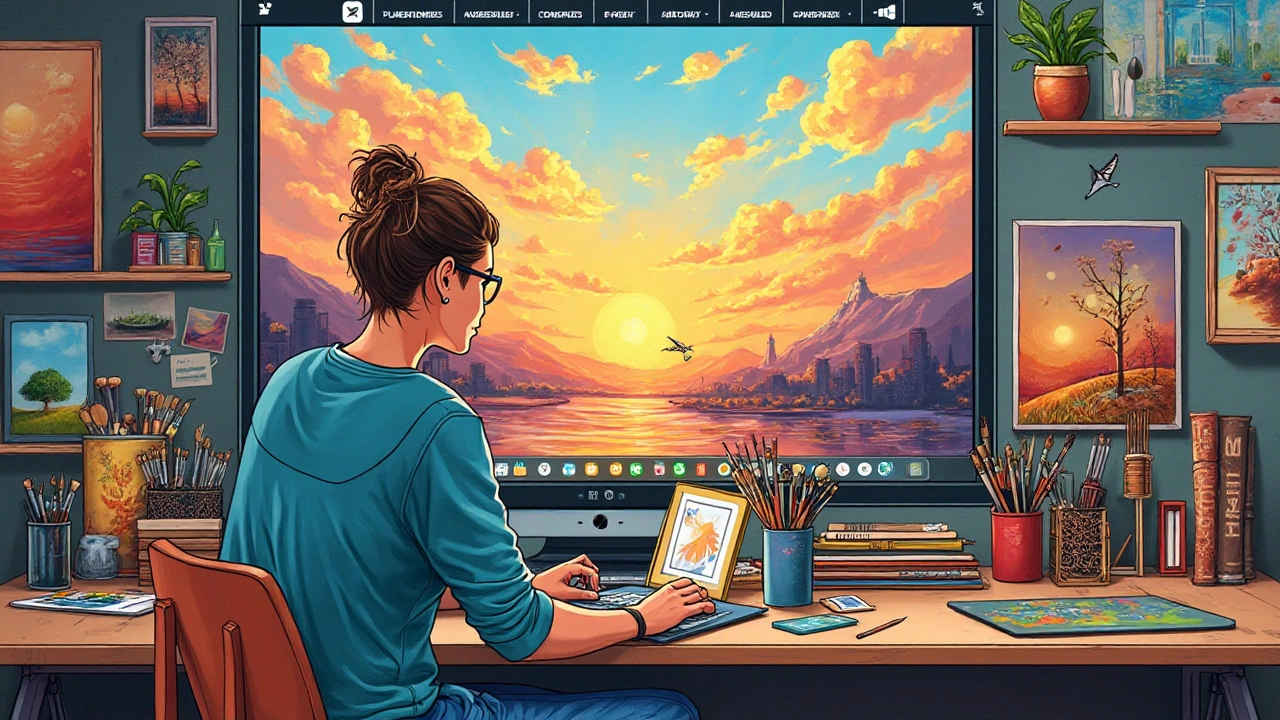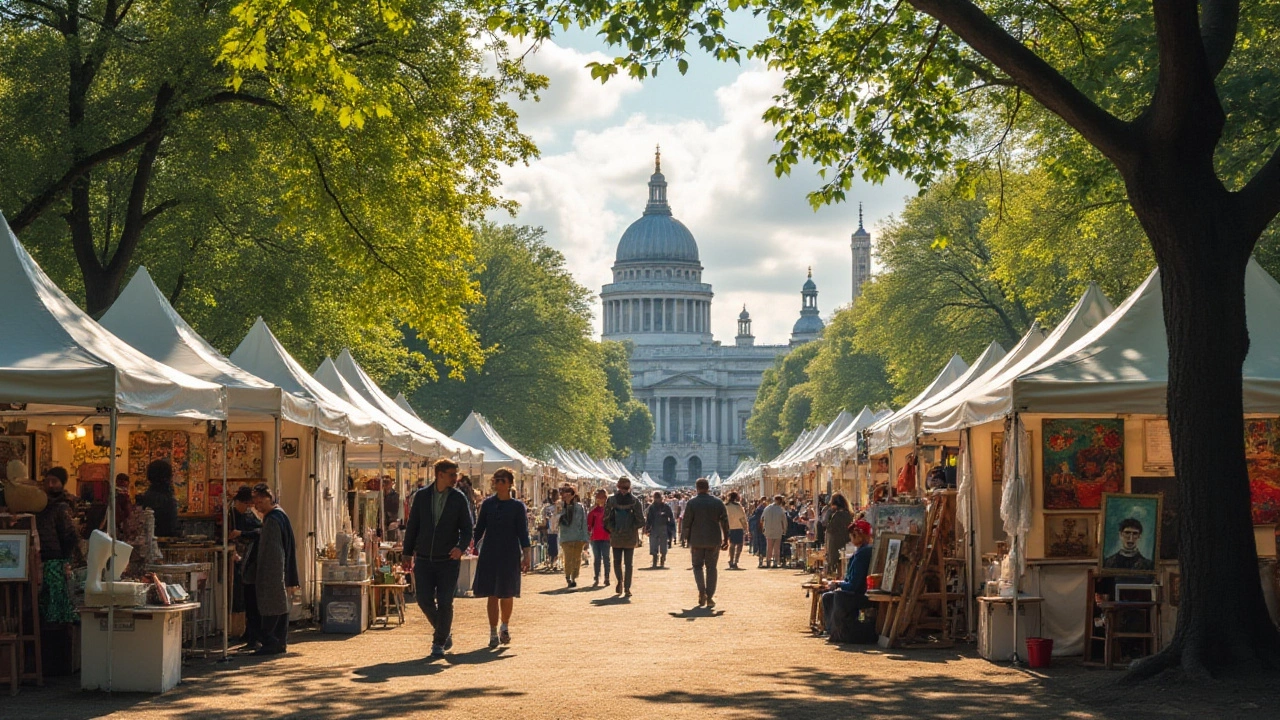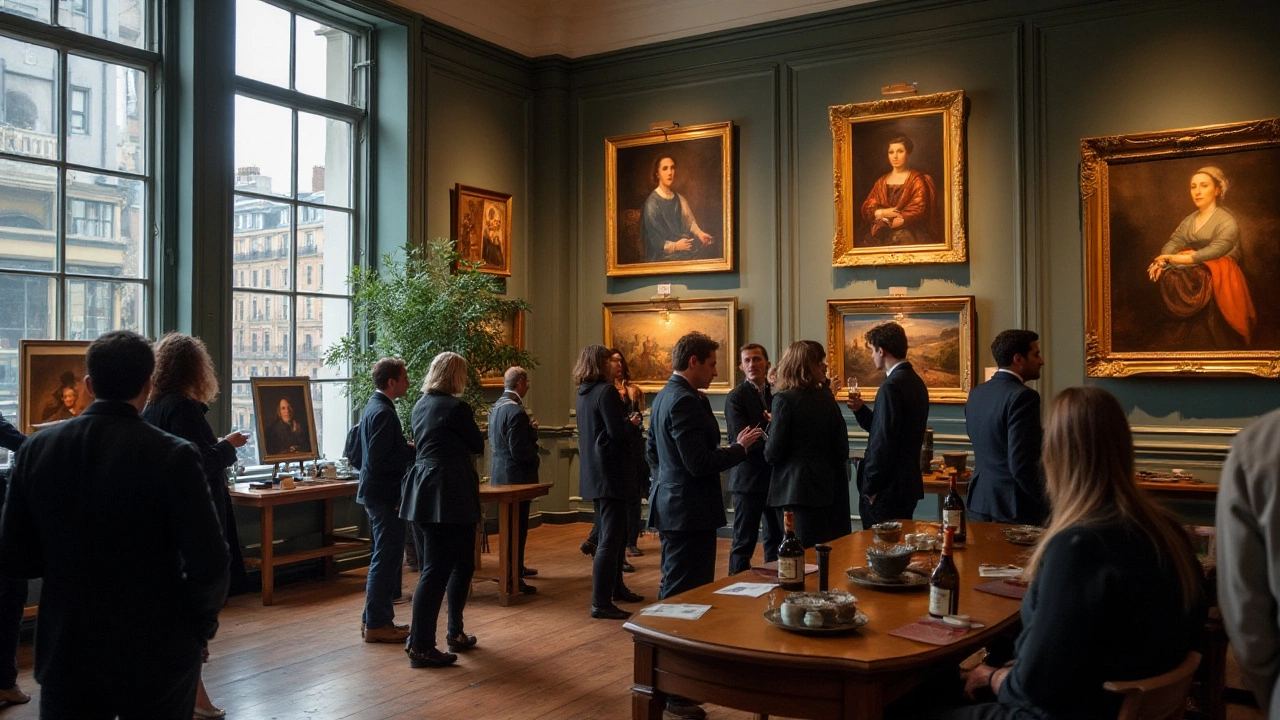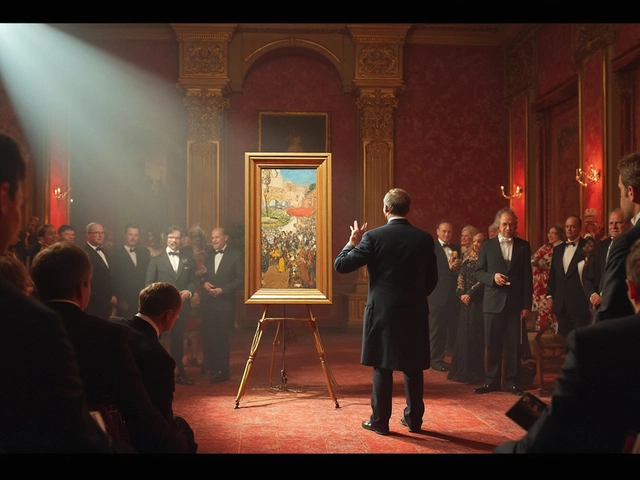In the world of art, deciding where to sell your creations can be as important as the creative process itself. With so many options available today, it's essential to understand where your artwork will shine best. Whether you’re a painter, sculptor, or digital artist, the choice of venue can greatly influence your exposure and profitability.
From traditional art galleries that offer prestige and exclusivity, to the vast reaches of online platforms that provide global access, each selling path presents its own unique set of opportunities and challenges. As artists seek to navigate this vast marketplace, knowing the pros and cons of each option can help tailor your approach to suit your art style and business goals.
By examining these various selling environments, you can make informed decisions that align with your artistic voice and market objectives, ensuring your masterpieces reach the right eyes and hearts.
- Exploring Traditional Galleries
- Navigating Online Art Platforms
- Art Fairs and Markets
- Social Media and Direct Sales
Exploring Traditional Galleries
Traditional art galleries have long been the cornerstone of the art market, providing artists with a reputable and often prestigious venue to showcase their creations. These spaces are deeply rooted in history, often reflected in their aesthetic appeal and the way they curate exhibitions for public viewing. For artists, being displayed in a gallery is not just about sales; it is about entering a dialogue with art enthusiasts, collectors, and critics who frequent these spaces. The intimate setting of a gallery allows for a more personal connection between the artwork and its audience, offering insight and appreciation that might be missed in less curated environments.
One significant advantage of traditional galleries is their ability to effectively highlight an artist's work through curated exhibitions. Curators, who often have a skilled eye for art and years of experience, play a crucial role in presenting the work in a way that resonates with the public. This relationship between the artist and curator can be invaluable. Many renowned artists have been discovered and catapulted to fame thanks to the careful curation and promotion by established galleries. Being part of such an institution often adds a layer of credibility and exposure that an artist may not receive elsewhere.
It's worth noting that not all galleries operate in the same way. Some focus on emerging artists, providing the exposure needed to kickstart their careers. Others may specialize in contemporary or classical works, offering a platform for specific art movements or periods. For instance, renowned galleries like the Gagosian or the Saatchi Gallery have their distinct styles and niches. The key for any artist is to find a gallery whose vision aligns with theirs, as this synergy often translates to more successful collaborations and exhibitions.
"A gallery is more than just a venue; it is a partnership," notes art critic Jonathon Levine. "The right gallery can amplify an artist's voice and foster a thriving career."
However, artists need to be aware of the challenges that come with this traditional route. Entry into these spaces can be highly competitive, with galleries receiving numerous submissions. The representation often requires a formal agreement, which may include exclusivity clauses or commission arrangements. Artists should consult with trusted advisors or peers before entering such agreements to ensure they understand the terms and potential implications on their practice and profits. Despite these hurdles, the benefit of an established network of clients that galleries often have access to cannot be overstated, opening doors to collectors who trust the gallery's judgment.
For those considering venturing into this realm, there's a notable variance in approach when compared to digital platforms. The tactile experience that a gallery provides remains unparalleled. Here, patrons can not only view a piece but also experience its texture, scale, and true color without the alterations a screen may apply. While digital environments can reach a broader audience quickly, galleries offer a more concentrated and personal interaction that appeals to many collectors who prefer to purchase based on an in-person experience.
Art exhibitions and the involvement of traditional galleries provide a bastion of opportunity for emerging and established artists alike. Yet, like any component of the art industry, they require effort, patience, and a strategic approach to navigating their often complex and competitive landscape. Ultimately, for artists who can successfully engage with these traditional institutions, the rewards can be significant both in recognition and in the financial returns on their selling art.

Navigating Online Art Platforms
In this digital age, more artists are turning to the internet to sell their artwork, discovering a realm where geographical barriers fall away and vast audiences await. Online art platforms have revolutionized how artists present and sell their creations, providing access to a broader, more diverse market than ever before. Whether you're an emerging artist looking to garner attention or a seasoned creator seeking new revenue streams, the right platform can significantly impact your sales and recognition.
Platforms such as Etsy and Amazon have made it relatively straightforward for artists to set up shop. Etsy is particularly renowned for connecting artists with buyers interested in handmade, vintage, and unique items. Its substantial audience base can be advantageous, but it also means fierce competition. On the other hand, platforms like Saatchi Art and Artfinder cater specifically to the art industry, providing features that highlight artists and their works to art lovers and collectors. These platforms often emphasize artist stories, offering a more curated experience that might appeal to buyers seeking authentic, original art.
Art marketplaces like these offer tools that help with marketing and logistics, vital for artists who prefer to focus on creation rather than administration. Whether through integrated promotional tools or seamless customer support, these platforms can ease the challenges associated with selling art online. However, they often require commissions or membership fees, making it crucial for artists to evaluate costs against potential benefits. For newcomers, understanding these financial implications is essential in crafting a sustainable business model.
According to a 2023 report by The Art Market, online sales accounted for 19% of the total art market, signaling a trend that isn’t slowing down anytime soon.
Artists must consider privacy and intellectual property protection when moving to digital platforms. Ensuring your artworks are appropriately watermarked and that your listings are protected from unauthorized use is crucial. High-quality images, attractive descriptions, and fair pricing also play significant roles in ensuring digital success. The online art world can be saturated, but maintaining distinct branding and a strong narrative can help artists cut through the noise.
In conclusion, online art platforms offer unparalleled exposure and convenience. Artists should leverage these digital spaces to reach audiences far beyond their local galleries. By understanding each platform’s unique offerings and constraints, and strategically selecting where to showcase their work, artists can tap into a global marketplace and maximize their potential for success.

Art Fairs and Markets
Art fairs and markets are vibrant events that bring together creative talents, art enthusiasts, and collectors all under one roof. These gatherings have long been a cornerstone for artists looking to showcase their artwork beyond the confines of a traditional gallery. Unlike conventional exhibitions, art fairs create a bustling marketplace that fosters direct interactions between artists and buyers. This face-to-face engagement can be invaluable, allowing artists to build relationships, receive immediate feedback, and understand the preferences of potential buyers. Notably, these fairs range from grand international events like Art Basel, which attracts visitors from all over the globe, to cherished local markets that serve as community hubs for discovering local talent.
One of the biggest advantages for artists participating in such events is the concentrated exposure to art buyers and industry professionals, offering unparalleled opportunities to broaden their network. Often, stands at major art fairs can be quite pricey, yet many regional and emerging artist fairs offer more accessible options for passionate creators keen on reaching an audience. Artists can also capitalize on the unique chance to learn from their peers and gain insights from established names in the field. Each interaction helps shape an artist's understanding of the art market and what drives sales in a competitive landscape. In a memorable insight shared by renowned artist Banksy, he noted, "Art should comfort the disturbed and disturb the comfortable," highlighting how these spaces also ignite important dialogue and reflections around the artwork itself.
Art fairs are not only about sales, though. They serve as a barometer for industry trends and shifts in consumer tastes, often revealing the avant-garde nature of art that's moving collectors. The infectious energy of an art fair can also inspire creators to push their limits and experiment with new techniques or subjects. Some artists even find unexpected collaborations that can lead to thrilling projects beyond the fair. Each event tends to have a different theme or focus, so it’s crucial for artists to research and select ones that align with their work’s style and audience. For those just entering the scene, starting with smaller markets like regional crafts fairs or street art festivals provides excellent trial runs to hone their pitch and presentation manners.
Moreover, while the offline world of art fairs is thriving, there is an increasing blend of digital elements, with virtual showcases complementing in-person events. For instance, platforms are now integrating QR codes and augmented reality to enhance viewer experience and understanding, making art accessible to a broader demographic. The global pandemic accelerated this evolution, introducing hybrid models that continue to expand audience reach and engagement. It’s crucial for artists to stay informed about such innovations and utilize them to leverage their art fairs' display strategies effectively. On the pragmatic side, preparing for an art fair involves meticulous planning—from logistics like travel and transport to crafting an appealing booth display that captures attention.
Investing time in these events also requires an artist to be strategic about pricing and marketing. They can learn to set their rates based on materials, time invested, and market trends, ensuring they remain competitive while reflecting the genuine value of their creations. Successful sales often depend on an inviting atmosphere where buyers feel connected not just to the artwork but to the artist's story behind it. Participation in events like the Venice Biennale or smaller festivals in bustling cities can, therefore, serve as significant milestones in any artist’s career, often leaving a lasting impression that ripples through future opportunities.

Social Media and Direct Sales
Social media has transformed the art landscape, allowing artists to reach audiences that were once out of grasp. Platforms like Instagram, Facebook, and TikTok serve as vibrant marketplaces where creative minds can showcase their art directly to potential buyers. Unlike traditional galleries, social media sites give artists the tools to shape their brand identity and engage with fans and collectors on a personal level. By establishing a strong online presence, artists can attract attention from diverse audiences across the globe, significantly widening their viewership and potential sales.
Building a following might start with a few followers, but it can grow exponentially with the right strategy and content. Artists focusing on consistency in posting, utilizing behind-the-scenes looks, and engaging storytelling can build a loyal audience. Curating aesthetically pleasing profiles that reflect personal style and artistic voice aligns with the interests of potential buyers. The use of hashtags is crucial, as trending tags help increase visibility in searches, often opening doors to media features or collaborative opportunities.
Direct sales through social media have become increasingly attractive for both artists and collectors due to their simplicity and transparency. Transactions can occur smoothly within private messages or through integrated shop links that lead to websites or online stores. These direct-to-consumer sales often bypass gallery commissions, allowing artists to retain more of their revenue. The immediacy of these platforms also means artists can receive real-time feedback, helping them adjust their approach or pricing strategy.
"Social media is a gallery that never closes. It allows artists to keep their doors open to the world," says renowned art curator, Anna Johnson, emphasizing the 24/7 nature of online art exposure.
Many contemporary artists have transcended traditional boundaries by leveraging social media campaigns. Events such as live-streaming art processes or conducting virtual auctions create interactive elements that captivate audiences and drive engagement. This engagement translates into loyalty and, ultimately, sales. The insights gathered from these interactions can be invaluable for understanding consumer behavior and preferences.
To elevate their presence, artists should consider diversifying their content by mixing formats such as videos, stories, and interactive Q&A sessions. Engaging with followers through comments and hosting feedback sessions can foster communities around their work. It's essential to be adaptable and embrace new features or platforms as they emerge, ensuring their art remains fresh and their outreach efforts effective.
As data continues to shape strategies, artists often use analytics tools to measure what resonates with their audience. Identifying peak engagement times and post-performance offers guidance for future content planning. Cloud-based services provide insights into consumer demographics, helping refine target strategies and enhancing the effectiveness of direct sales efforts.





